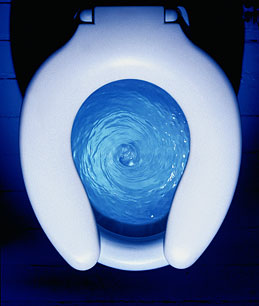Imperial College in London and partners begin developing prototype device, following funding from the Bill and Melinda Gates Foundation. The post originally appeared on their website here.
By: Colin Smith
 Work on a prototype device for harvesting energy and clean drinking water from human waste gets the go ahead this month.
Work on a prototype device for harvesting energy and clean drinking water from human waste gets the go ahead this month.
A project from a team of researchers from Imperial College London, the University of Manchester and Durham University beat more than 2,000 other proposals to receive funding from the Bill and Melinda Gates Foundation to develop a prototype system for recovering drinkable water and harvesting hydrogen energy from human faecal waste. The researchers believe the technology could provide an inexpensive device for people in the developing world to generate clean water and energy from waste and a sustainable source of hydrogen energy that could be used to power homes in developed countries.
The researchers say that the device will be portable, allowing installation in homes and remote locations. The technology is based on a porous scaffold that holds bacteria and metal nano-particles. When faecal sludge is filtered through the scaffolding these particles will react with the waste mater to generate the recycled resources. These can either be used immediately or stored for later use.
Bacteria in the device will form part of a process to extract energy and clean water from human faecal waste
The first stage of the project will see the team developing a stand-alone sanitation device, making it easier and cheaper for people in developing countries to adopt the technology where large sewage networks may not exist. Where sewage infrastructure is in place, the technology could be hooked into the system, minimising implementation costs for home owners.
In the long-term, the researchers aim to further develop their device into a ‘pick and mix’ series of recycling units that can extract the types of resources most useful for users such as: electrolytes, used for generating electricity; methane, for energy; and ammonia, which is a widely used fertiliser. The team says their device would be an advantage over other systems currently on the market that can only recover one or two resources at most.
Dr Martyn McLachlan, Department of Materials at Imperial, says: “In the future, we may see homes in the UK generating their own clean water, energy and fertilizer simply by doing what comes naturally to us all once or twice day. More important are the implications for developing countries, where the provision of clean drinking water is essential for supporting life and self-generated energy could be used to support economic growth.”
The researchers plan to have a prototype ready to demonstrate by 2013. The project team and the concept were a product of a recent Engineering and Physical Sciences Research Council “Inspire in the Physical Sciences” workshop.



{ 1 comment… read it below or add one }
When someone writes an piece off writing
he/she retains the image of a user in his/her brain that how a user can be aware of it.
Thus that’s why this piece of writing is outstdanding. Thanks!